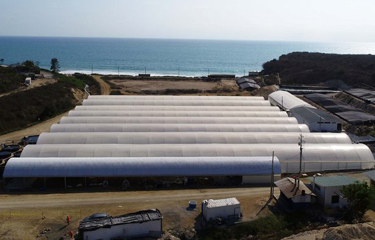Following significant disruptions caused by the COVID-19 pandemic and its impact on global supply chains, shrimp broodstock suppliers have redoubled their focus on the fast-growing shrimp market in Asia, according to Willem van der Pijl, the founder of consultancy Shrimp Insights.
India, Indonesia, Vietnam, and Thailand are major shrimp exporters; and Bangladesh, Sri Lanka, and the Philippines all have smaller but burgeoning shrimp sectors. And while it has reduced its shrimp exports in recent years, China remains an important market in Asia for various major broodstock producers due to its huge domestic consumption levels. The country produced around 400,000 vannamei broodstock and imported about another 600,000 in 2019. Its broodstock imports were worth USD 20 million (EUR 19 million) in 2020, up 33.3 percent year-on-year. In the first 11 months of last year, however, various factors – primary among them a constriction of shipping availability to China caused by supply chain issues and COVID-19 safety protocols – resulted in a drop-off in vannamei broodstock exports to China by value.
India, the largest shrimp producer in the world, is a huge market for broodstock suppliers, with the country importing an all-time high of 125,000 broodstock shrimp between November 2021 and February 2022. Other key markets in Asia include Vietnam, which imported around 210,000 animals in 2021, and Indonesia, which imported an estimated 100,000 broodstock.
Competition among suppliers of broodstock to gain more market share in these markets is getting fiercer, especially when the pandemic-related challenges are easing, van der Pijl said.
American Penaeid Inc. (API), a global vannamei broodstock producer, saw its exports fall to 277,000 animals in 2020 from 330,000 animals in 2019 due to COVID-19 related disruptions. But the company managed to sell 535,000 animals in 2021 as it focused more on sales of parent postlarvae and introduced a new line of products, API Owner and CEO Robin Pearl told Shrimp Insights.
As part of its market expansion, last year API launched its new Dragon range in China, which is currently its biggest market. The new line has higher survival rates, impressive growth, a low feed-conversion ratio, and improved fecundity, Pearl said. API expects its Dragon products will help it remain as one of the top suppliers of vannamei broodstock in China and assist its expansion to India and Indonesia, he said.
Hendrix Genetics/Kona Bay, Shrimp Improvement Systems (SIS), and Blue Genetics – a newly created entity resulting from the merger of Groupe Grimaud’s Blue Genetics merger with Taft, Texas, U.S.A.-based Sea Products Development – have been trying to expand their market shares in China as well. These three companies hope to step into the void left by CP Foods, which has found it harder to sell its fast-growth line due to the outbreak of diseases in many shrimp-farming regions in China, van der Pijl reported.
SIS has also faced COVID-19-related logistics challenges in selling its Broodstock in Asia, but the company managed to boost its broodstock sales to 346,000 animals in 2021, up from 291,000 in 2020. SIS expects to export 400,000 animals this year, according to SIS CEO David Leong.
SIS has a significant presence in India and Vietnam, where it held respective market shares of 52 percent and 54 percent in 2021. The company is strengthening its operations in its key markets with a new generation of lines, and is also looking to increase sales to China, Shrimp Insights reported.
Hendrix Genetics – Kona Bay chose to team up with local partners to expand its operations in targeted markets.
Hendrix Genetics – Kona Bay held a market share of imported broodstock of around 60 percent in Indonesia in 2021, up from about 50 percent in 2019, but it is aiming for an even larger share of the market through a partnership with Singapore-based animal protein firm JAPFA to establish a joint venture called Kona Bay Indonesia. The JV will import parent postlarvae from the U.S. state of Hawaii to sell to local hatcheries when they become adult broodstock. Kona Bay Indonesia is supplying broodstock to 32 hatcheries, up from nine previously. In addition to an existing facility that is able to produce up to 80,000 animals per year, the company plans to commission another facility in Bali with a capacity to produce 100,000 animals per year later in 2022, Hendrix Genetics Director of Operations and Shrimp David Danson said.
Similarly, in early 2022, Hendrix Genetics – Kona Bay formed another joint venture in India with Sapthagiri Group, a major hatchery operator in with a 20 percent share of India’s broodstock market share. The joint venture, once operational in 2023, will have a capacity to produce 100,000 animals per year and will serve both Sapthagiri’s needs and those of more than 30 other hatcheries across India. Hendrix Genetics – Kona Bay and Sapthagiri hope the new joint venture will help them attract new customers and to overcome logistical challenges inherent to operating in India, the companies said.
Hendrix Genetics – Kona Bay is also putting a focus on China, which has now become its third-largest market, Shrimp Insights reported.
Van der Pjil said these larger global players have established significant enough footholds in the Asian marketplace for broodstock that it may be difficult for them to be supplanted, even by companies he deemed innovative, such as SyAqua, which recently received a USD 12 million (EUR 12.5 million) investment from private equity firm Ocean 14 Capital. With disease still playing a major role in shrimp farming across the continent, van der Pijl predicted suppliers that focus on survival rates will have the best chance of success.
“There seems to be an overarching expectation in the Asian broodstock market: disease pressure in farms that lack biosecurity cause these farmers to increasingly favor survival over growth. Although this may sound like a no-brainer to most of us, it’s a real turning point in the Asian industry,” van der Pijl said. “While most companies nowadays market some of their lines as being tolerant to disease, differences in survival rates are likely to become more visible over time. Companies that prove their superiority in terms of survival and don’t underperform too much in terms of average growth, feed conversion, and fecundity, whether they’re big or small, are likely to have a bright future ahead.”
Photo courtesy of Hendrix Genetics







